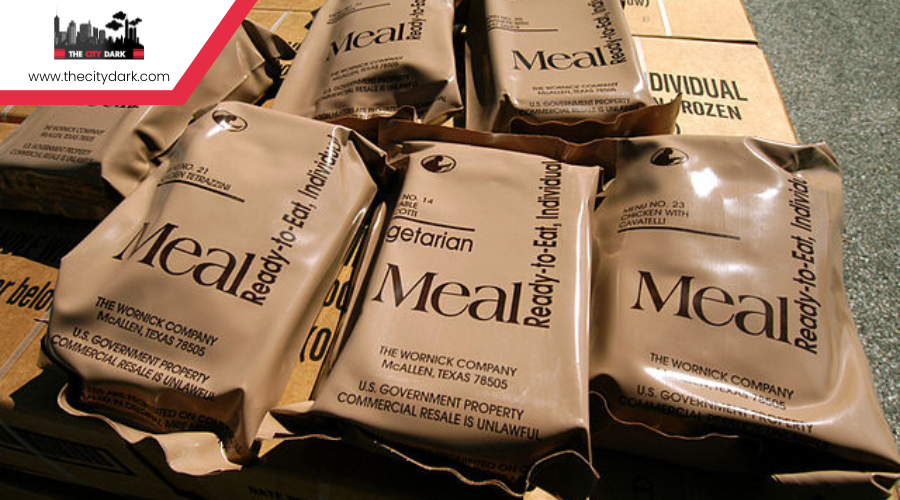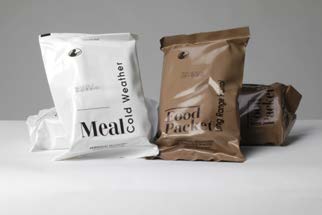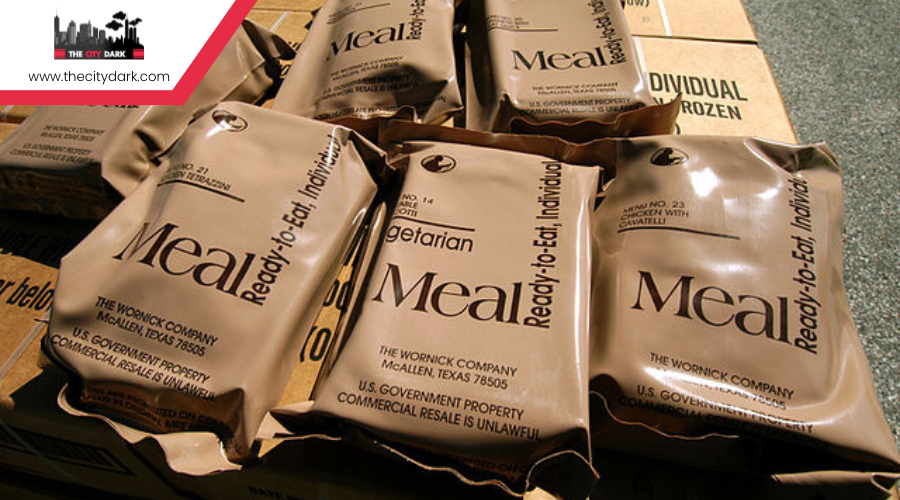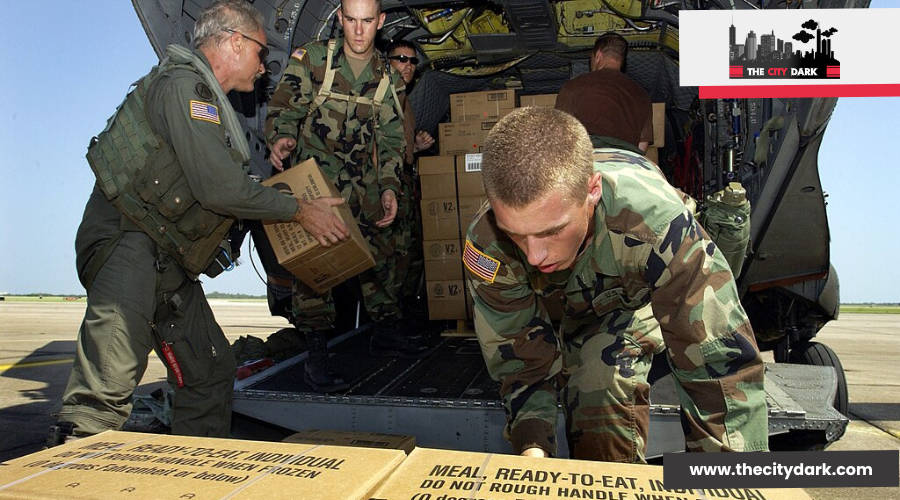What Are the Latest Technological Advances in MRE Packaging?

The latest advancements in MRE packaging, including advanced barrier films and resealable features, significantly improve the shelf life and convenience of military rations. These innovations, which also incorporate eco-friendly materials, contribute to environmental sustainability and can revolutionize logistical operations in challenging conditions.
How do you view these developments in enhancing the efficiency and sustainability of MREs?
Advanced Barrier Films
Advanced barrier films significantly extend the shelf life of MREs by effectively shielding the food from oxygen, moisture, and various contaminants. These films, which incorporate nanotechnology, create multiple impermeable layers that prevent elements known to spoil food. This technology ensures that MREs are both safe to consume and nutritionally robust, even under adverse conditions.
The films comprise multiple layers, each tailored for a specific protective function. Certain layers block oxygen, others repel moisture, and additional layers protect against harmful light and environmental pollutants. This comprehensive method of preservation is crucial, particularly in environments where conditions are variable.
As a result, MREs can be stored for long durations without deterioration in quality or safety, maintaining their flavor, texture, and nutritional content. This breakthrough in packaging technology is pivotal for those dependent on MREs in remote or emergency settings, illustrating how advanced barrier films are transforming food storage and consumption in mobile scenarios.
Resealable Packaging Features

The latest updates in MRE packaging include enhanced zip closure systems that improve accessibility and ensure secure resealing to preserve the freshness of the meals.
These improvements also feature multi-use seal capabilities, enabling the packaging to be opened and closed multiple times without losing its integrity.
Enhanced Zip Closure Systems
Enhanced zip closure systems in MRE packaging now feature resealable capabilities that significantly improve food preservation and convenience. These systems are crucial for soldiers in the field, as they help maintain the freshness and safety of meals by protecting against environmental factors and contaminants.
The resealable zip closures not only safeguard food but also simplify portion control, allowing soldiers to consume what they need and save the rest, thus minimizing food degradation. This feature is particularly beneficial for quick, on-the-go snacking without the need to consume entire packages at once.
Furthermore, the ability to reseal food packaging contributes to reduced waste, maintaining food quality over time and decreasing the amount of unused food. This enhancement supports sustainability and meets the evolving needs of soldiers in various operational contexts.
Multi-use Seal Capabilities
MRE packaging now features a multi-use seal, enhancing the ability to open, consume, and securely reseal meals multiple times. This resealable technology preserves freshness and extends the shelf life by protecting against external contaminants. The food remains fresh and safe for extended periods, making these packages highly effective for long-term storage.
The resealable design also minimizes food waste by allowing for consumption at a personalized pace. Users can portion out their meals as needed, which aids in precise energy management and prevents overeating. This feature is particularly beneficial in scenarios requiring rationed food consumption or when individual energy needs vary.
Furthermore, the robust design of these MRE packages ensures that meals are secure and protected during transportation and storage, regardless of the external conditions. This capability is crucial in environments such as military deployments or disaster relief operations, where maintaining food quality and safety is paramount.
Eco-Friendly Material Innovations

As you explore the latest developments in MRE packaging, you'll observe a notable shift towards environmental sustainability. Manufacturers have adopted biodegradable packaging solutions that significantly reduce the environmental impact, alongside incorporating a higher percentage of recycled materials.
These initiatives not only align with environmental objectives but also ensure the packaging remains durable and functional, essential for meal storage and transport.
Biodegradable Packaging Solutions
Biodegradable packaging solutions are revolutionizing the storage of Meals Ready-to-Eat (MREs), significantly minimizing their ecological impact. These sustainable materials are essential for reducing both waste and the carbon emissions tied to traditional MRE packaging. The push towards these eco-conscious practices reflects a broader commitment to environmental responsibility in military operations and logistics.
Key points about the advancements in biodegradable MRE packaging include:
- Eco-Friendly Materials: These packages are made from substances that naturally decompose, significantly reducing environmental pollution.
- Environmental Benefits: Adopting biodegradable packaging leads to a substantial decrease in the buildup of non-biodegradable waste.
- Global Alignment: This initiative aligns with worldwide trends towards sustainable practices in food packaging across different industries.
Recycled Materials Usage
Recent advancements in eco-friendly MRE packaging have successfully integrated recycled materials, improving sustainability and operational efficiency. These new packaging designs prominently feature environmentally friendly elements such as polymeric coated paper. This material not only provides excellent water resistance but also strengthens the packaging when wet, supporting the necessary durability for field use while aligning with environmental conservation efforts.
Furthermore, replacing solid fiberboard with corrugated fiberboard in ration containers has resulted in a significant 17% reduction in weight. This change maintains the required compression strength for the containers, ensuring they withstand rough handling during transportation.
The adoption of lighter containers facilitates easier transport and improves the recyclability and repulpability of the materials, contributing to reduced solid waste generation. Production lines have been updated with eco-friendly glues and inks, which maintain or increase production speeds. This efficient integration allows for loading an additional pallet of MREs per truck, optimizing transport due to the reduced weight.
Reducing Carbon Footprint
Eco-friendly packaging materials are transforming Meals Ready to Eat (MREs) by significantly reducing their carbon footprint. Innovations such as polymeric coated paper enhance water resistance while ensuring the packaging remains recyclable. This change focuses not only on keeping the contents dry but also on promoting responsible disposal of the packaging.
The adoption of new corrugated containers is crucial in this process. These containers aren't only repulpable, allowing them to be reprocessed into new paper products, but they also facilitate waste-to-energy processes without releasing harmful toxins.
Here are the key impacts of these improvements:
- Weight Reduction and Strength: The new packaging materials decrease weight by 17% while maintaining the strength seen in traditional materials. This reduction is essential for lowering the overall carbon footprint of the package.
- Enhanced Recyclability: Every element of the MRE packaging, including the polymeric coated paper, is crafted for recyclability, simplifying the recycling process.
- Optimized Transportation Efficiency: The lighter, recyclable containers enable loading an additional pallet of MREs per truckload, which significantly enhances transportation efficiency and lowers emissions.
Smart Packaging Technologies
Smart packaging technologies now equip MREs (Meals, Ready-to-Eat) with advanced features such as time-temperature indicators and freshness sensors to ensure food safety and freshness. These technologies provide real-time data, allowing precise monitoring of meal conditions, which is crucial for health and safety.
Additionally, these packages may incorporate RFID tags and QR codes to enhance inventory management. Such features aid in the efficient tracking and distribution of MREs, vital for logistical operations in military contexts. This system reduces manual inventory efforts and enhances accuracy, improving operational efficiency.
The integration of these technologies not only enhances food traceability but also significantly reduces waste. With accurate data on the condition and location of each MRE, military logistics can optimize resource allocation.
This advancement in packaging technology demonstrates a commitment to innovation, sustainability, and improved support for troops, ensuring that each meal provided represents progress in food technology.
Enhanced Durability Improvements
Advances in MRE packaging have focused on enhancing durability to better safeguard meals during storage and transit, utilizing smart technologies to extend shelf life and ensure resilience against environmental challenges.
Three significant improvements include:
- Polymeric Coated Paper: This material enhances water resistance and overall strength, significantly boosting the packaging durability. It helps preserve the food's integrity and quality, ensuring meals are in optimal condition when received.
- Corrugated Fiberboard: The newly implemented corrugated fiberboard in MRE packaging is both lighter and stronger than traditional materials, offering a 17% weight reduction which improves portability while maintaining strength.
- Recyclable Containers: These containers are designed to be repulpable and recyclable, maintaining compression strength even in demanding conditions, supporting environmental sustainability.
These advancements not only ensure that MREs are ready to eat under various conditions but also align with environmental sustainability efforts, making the packaging technology both efficient and responsible.
Temperature Monitoring Solutions
Temperature monitoring solutions in MRE packaging are vital for ensuring the safety and quality of meals during storage and transportation. These embedded sensors actively monitor and record temperature fluctuations, maintaining the meals within safe temperature ranges to prevent spoilage or contamination. By preserving optimal temperatures, these technologies not only enhance food safety but also help retain the taste and nutritional value of the meals, which can deteriorate under unfavorable conditions.
These systems provide real-time temperature data, enabling immediate corrective actions if temperatures approach unsafe thresholds. Such proactive management not only secures food safety but also bolsters the reliability of food supplies in scenarios where conventional preservation methods are inadequate.
Furthermore, the use of these monitoring technologies supports military operations by ensuring that food supplies are consistently safe and nutritious, reflecting the high standards of food preservation and safety required in diverse and challenging environments. This ensures troops have access to quality meals wherever their duties may take them.
Sustainable Disposal Options

Innovative MRE packaging materials such as polymeric coated paper offer sustainable disposal options that are both repulpable and recyclable. This development not only maintains the quality and readiness of meals but also significantly contributes to reducing solid waste. By adopting these materials, you're participating in a broader initiative to lessen environmental impact.
Here are the expected benefits:
- Reduced Waste: The ability to repulp polymeric coated paper allows it to be reintroduced into the papermaking process, thereby decreasing the reliance on virgin materials.
- Increased Recycling Rates: These materials are simpler to process than traditional solid fiberboard, which leads to improved recycling rates.
- Efficient Transport: Lighter packaging enables more efficient transportation, allowing for more MREs per truckload without increasing fuel usage.
Adopting these materials may necessitate adjustments in manufacturing processes, such as the use of new sustainable adhesives and inks. Nevertheless, the environmental advantages, including substantial reductions in waste and improved transport efficiency, justify these modifications.
This shift not only ensures that troops are well-fed but also supports environmental sustainability.
Conclusion
The latest advancements in MRE (Meal, Ready-to-Eat) packaging significantly enhance military food storage through several innovative features. These include advanced barrier films that extend shelf life by protecting against moisture and oxygen, and resealable packaging that maintains freshness after initial opening.
Additionally, the use of eco-friendly materials and options for sustainable disposal reflect a commitment to environmental responsibility. Smart packaging technologies, incorporating temperature sensors, ensure food safety by monitoring and displaying real-time storage conditions.
These improvements not only provide practical benefits in terms of convenience and safety but also support global sustainability goals, optimizing resource management in military operations.




